January transfer window: The best and worst business
Published:
With the January transfer window now closed, it is time to review which clubs did the best – and worst – business in a notoriously tricky trading environment.
Anyone who is planning to make bets in the football outrights markets would do well to consider how the relative strengths of squads have changed in a way that results and form will not yet be picking up.
How has the balance of power shifted?
The Premier League once again asserted its financial power with over a quarter of a billion pounds spent in the 2022 January transfer window and a net outlay comfortably greater than the other four of the ‘big five’ European leagues combined.
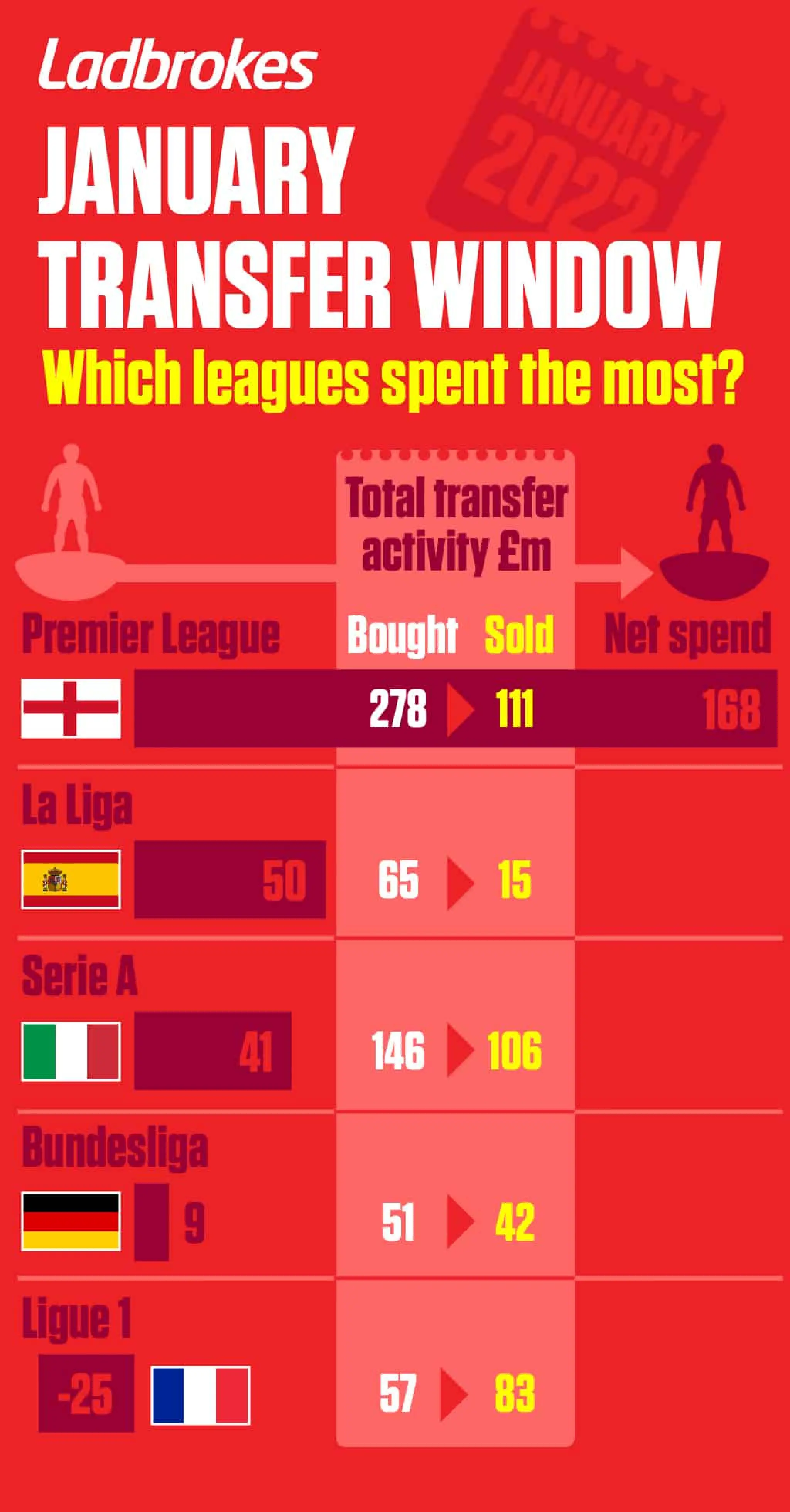
This will surely tip the scales further towards English clubs in continental competitions, as those in other European leagues lack the same spending power.
Who were the biggest spenders in the January transfer window?
It was unsurprising to see newly-rich Newcastle spend more than any club in the big five European leagues, although the scale of their outlay was more modest than expected.
Italian giants Juventus spent nearly as much, although their capture of striking sensation Dusan Vlahovic was part-funded by offloading two midfielders to Tottenham.
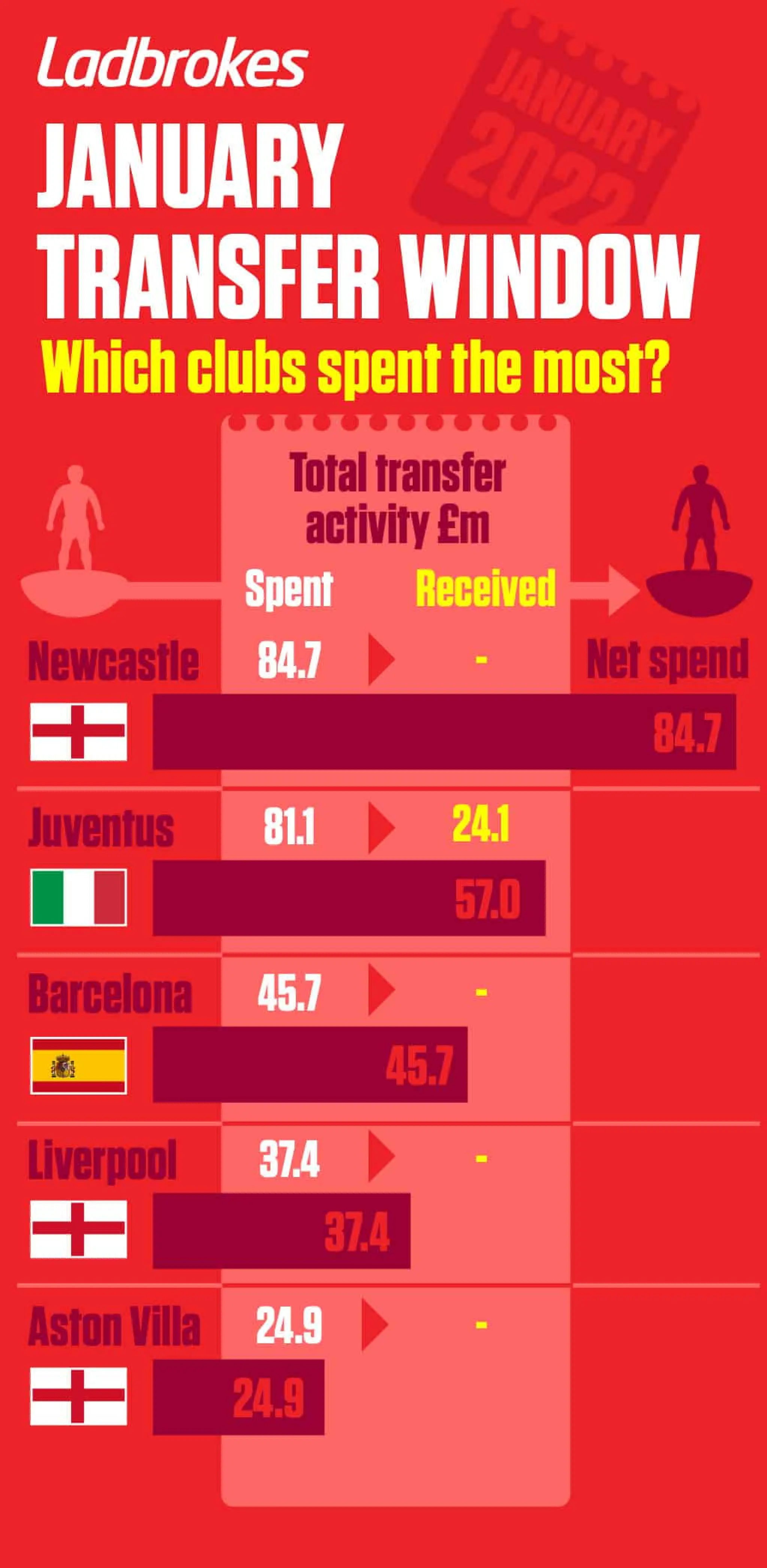
Despite their ongoing financial troubles, Barcelona were able to make significant reinforcements. Loaning Philippe Coutinho to Aston Villa gave them sufficient flexibility to add three Premier League players to their forward line; Ferran Torres, Adama Traore and Pierre-Emerick Aubameyang.
The Catalan giants look to be turning a corner under club legend Xavi after a dismal start to the season and this additional firepower will surely improve them further.
Will Diaz make a difference to Liverpool?
One of the biggest stories of the January transfer window was Liverpool snatching Porto’s Luis Díaz out from under Tottenham’s noses.
Spurs had successfully negotiated a price for the Portuguese star before the Reds matched their offer and spirited him away to Anfield, and he looks like an inspired signing for Liverpool manager Jurgen Klopp.
Díaz’s tally of 14 league goals this season is more than any wide attacker in a major European league apart from his new team-mate Mohamed Salah (16).
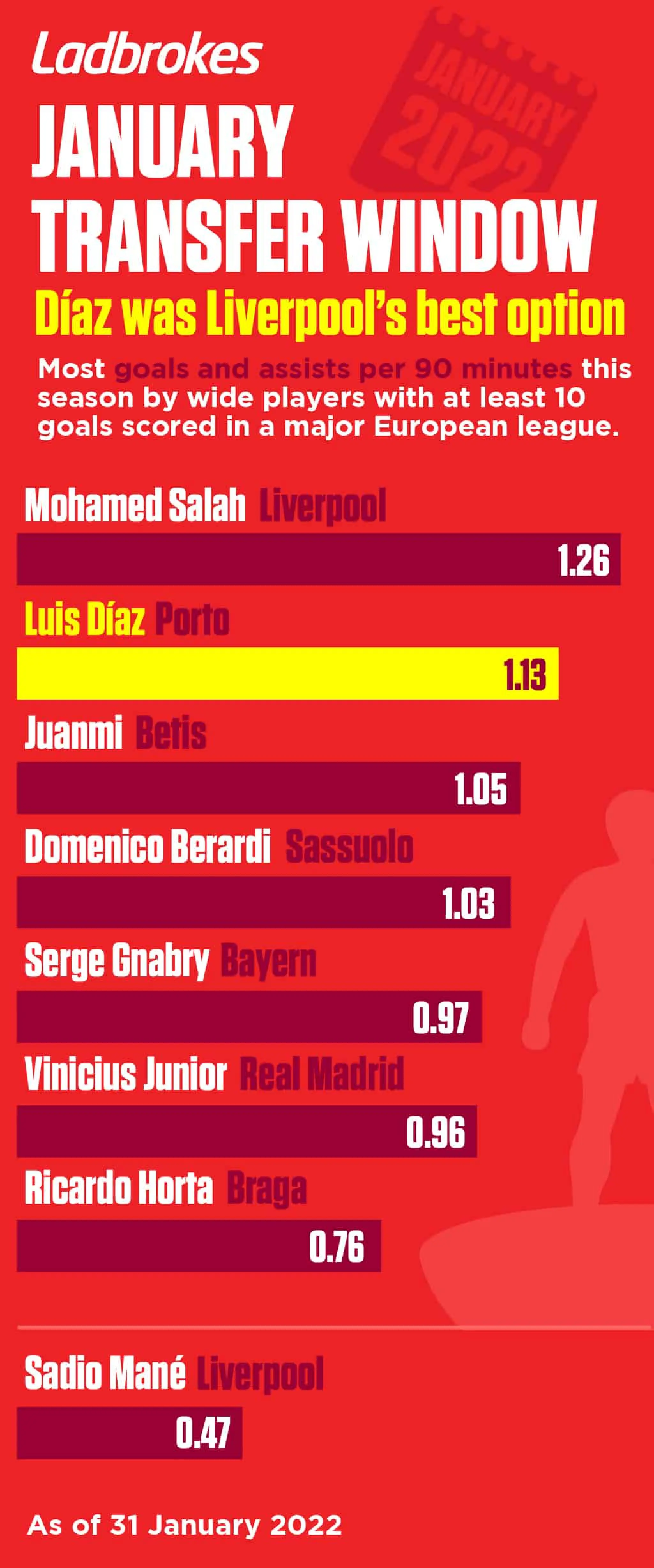
With Sadio Mané struggling to match his previous levels this season – despite a star turn at the Africa Cup of Nations – this move makes sense as a long-term solution on Liverpool’s left flank.
The Reds will have their work cut out catching runaway Premier League leaders Manchester City this season but a timely reinforcement to their ageing front line – after Diogo Jota’s move last season – should give them the depth they need to compete on all fronts for the rest of the campaign.
Did Newcastle spend wisely?
For all the speculation that Newcastle would make a statement signing up front – such as Harry Kane or even Kylian Mbappe – most of their January transfer window outlay went on defensive players.
The £25m signing of Chris Wood from relegation rivals Burnley proved to be the only addition to the Magpies’ attack. At full-back, Kieran Trippier and Matt Targett appear to be significant upgrades, while Dan Burn will add much-needed depth at centre-back given captain Jamaal Lascelles’ injury problems.

The club’s most eye-catching signing was defensive midfielder Bruno Guimarães, who has bossed the midfield for Lyon in Ligue 1 and the Europa League this season. The young Brazilian has excelled at both winning back the ball and moving it intelligently to feed attacks, so could have a transformational impact.
The statistics bear out a focus on defence as the correct strategy, as it was at the back where Newcastle have been struggling the most. There are six Premier League clubs who have taken fewer shots per match than Newcastle but only two who have allowed more in return.
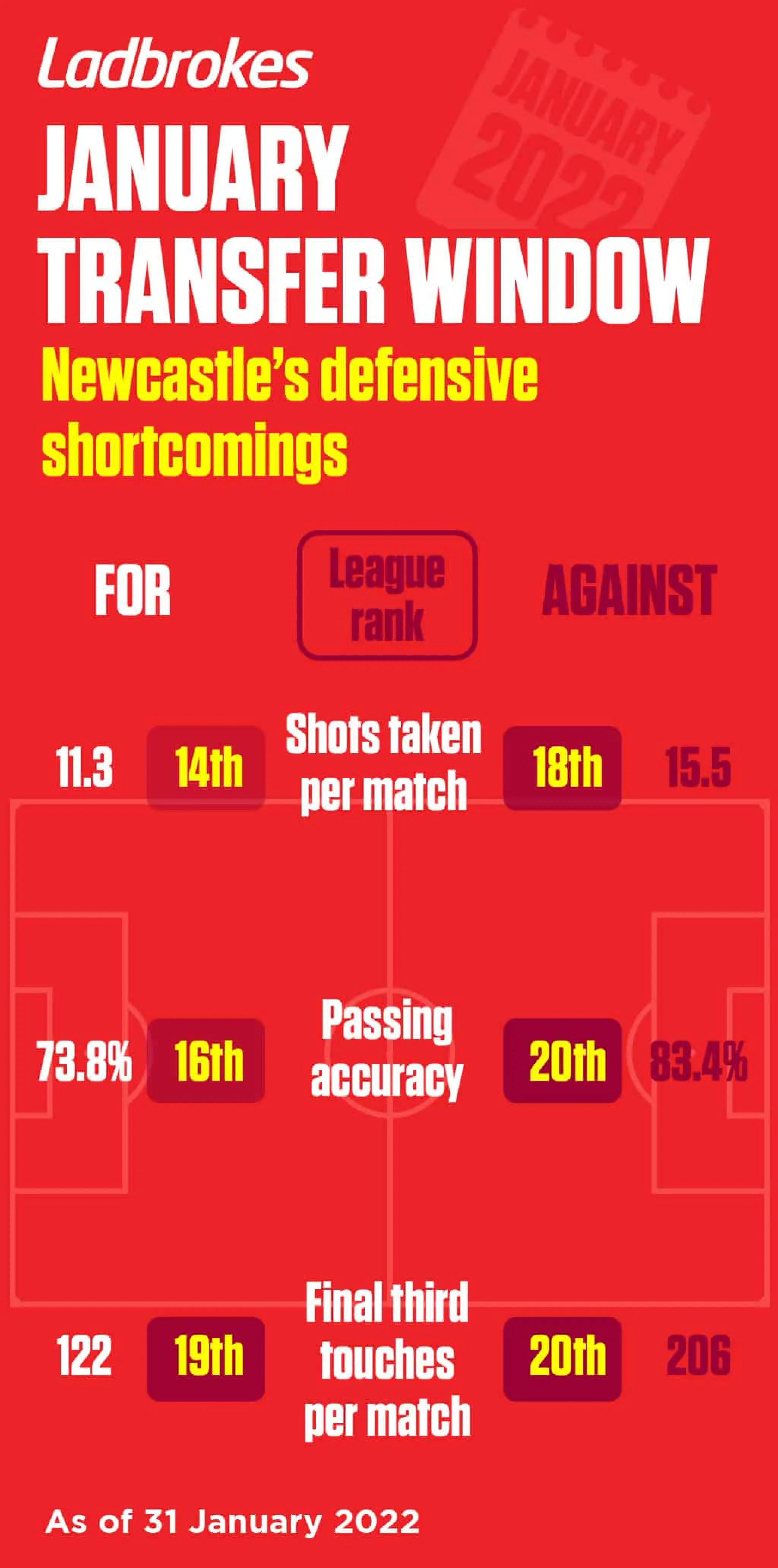
The Magpies have also had the lowest share of possession, while nobody in the division has allowed a higher share of passes against them to be completed or permitted more touches in their third of the pitch.
If their new defensive acquisitions can allow them to win the ball more regularly and hold on to it for longer, then avoiding the relegation trap door should be achievable.
Will Juventus’ gamble pay off?
Juventus have dominated Serie A in recent years, winning nine titles in a row between 2012 and 2020, but finished fourth last season and appear on course for another disappointing campaign this time around.
With the club announcing the largest financial loss in Italian football history in September, it was a surprise to see them pay the biggest fee in the January window. Almost £70m was spent in recruiting Dušan Vlahović from Genoa, beating the likes of Arsenal to secure his signature.
While this signing represents a sizable investment, Vlahović’s age and goalscoring record – including an impressive 17 league goals in just 21 appearances this season – make it an attractive one. Furthermore, the data shows why it was necessary for Juventus to bolster their attack.
Despite sitting just outside the top four at the end of January, the Turin side have been outscored by 10 other Serie A clubs this season. This cannot be dismissed as unlucky finishing, with the club ranking seventh for the number of shots and shots on target taken and ninth for touches inside the penalty area.
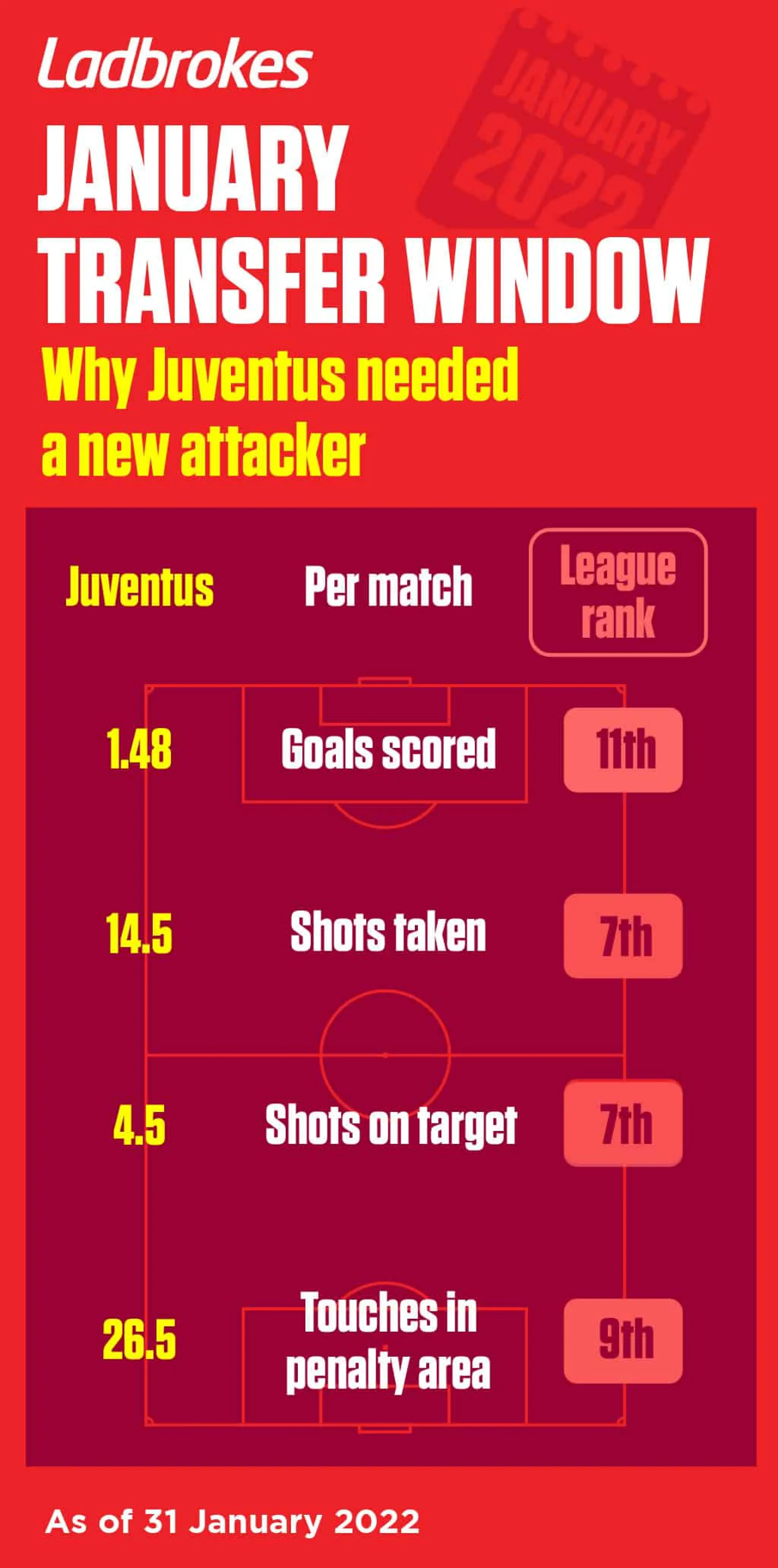
Not only did Vlahović sit joint top of the goalscoring charts at the time of his move, he also ranks third for shots taken and second for shots on target per match, so should be able to improve his new club’s numbers.
With Juventus just one point outside the top four at the end of January and having been handed one of the easier draws in the Champions League knockout stage – against a Villarreal side sitting seventh in La Liga – they could still end up enjoying a successful season if their new star striker can hit the ground running.








